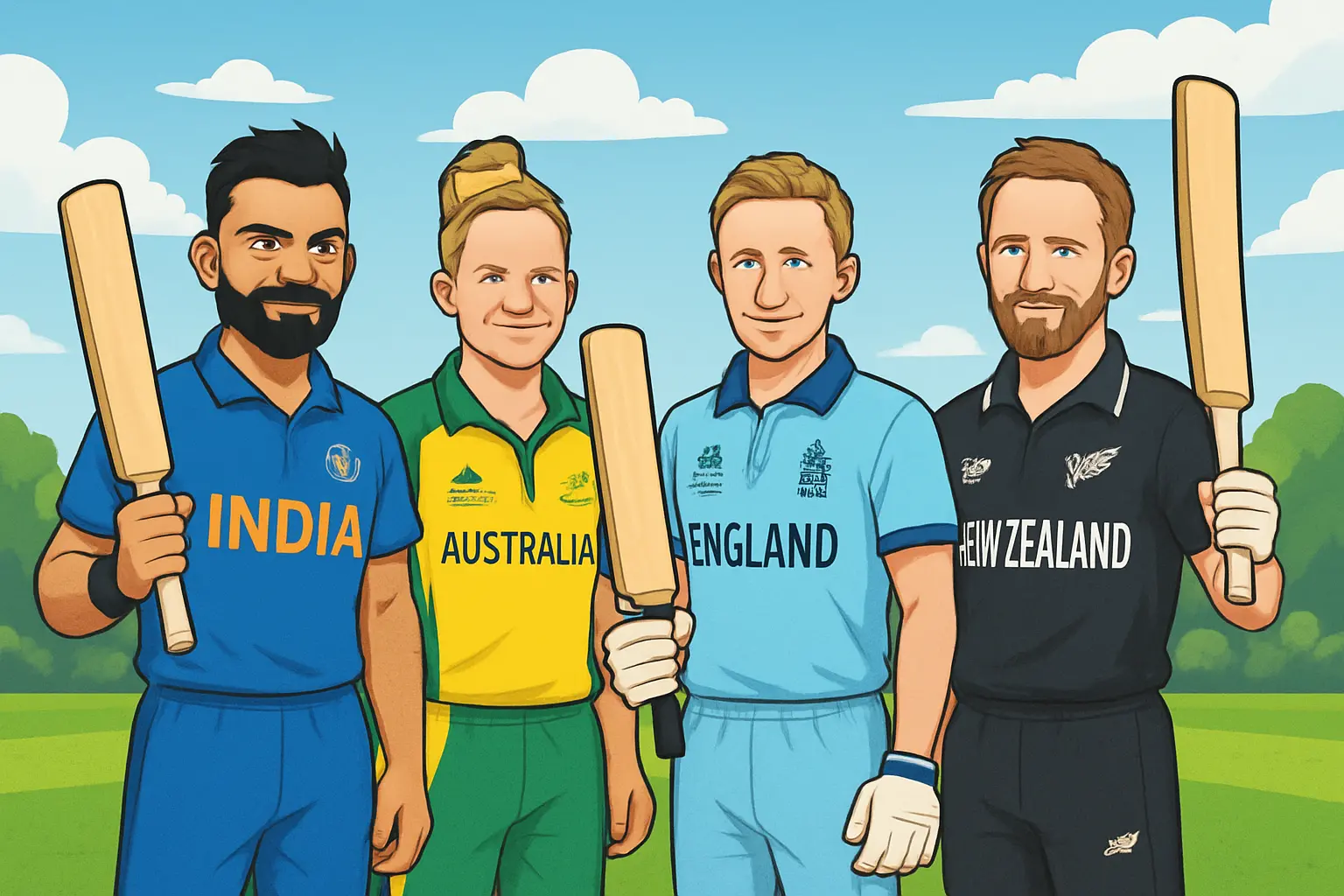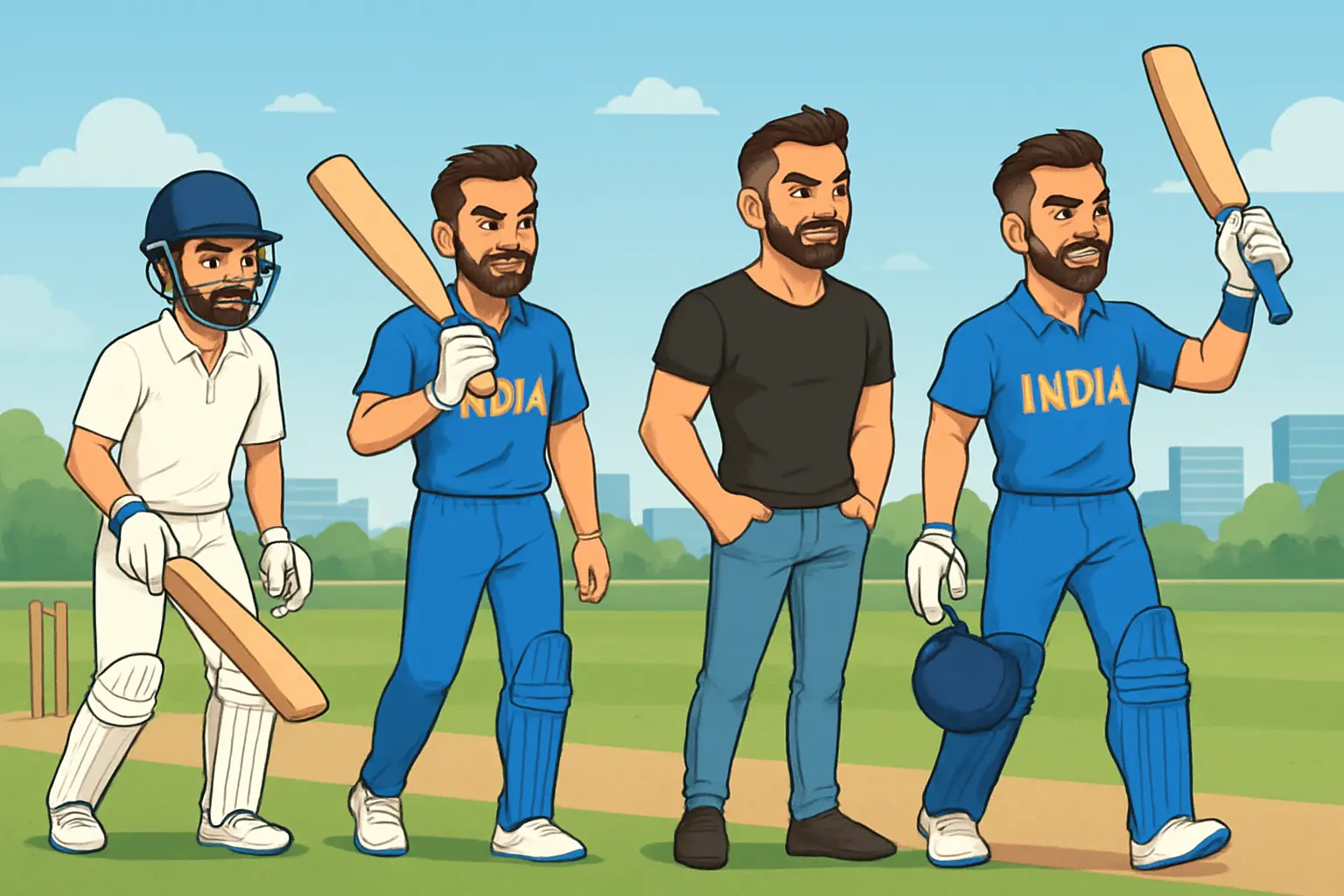Every T20 centurion tells you the same thing: there’s a moment when the ball begins to look like a beach ball and the field shrinks to a postage stamp. The scoreboard whips forward in twos and threes of sixes. Fielders become spectators. Bowlers change angles and speeds, captains shuffle shields on the boundary, and still the ball finds the rope. A T20 hundred is rare. A T20 hundred in a hurry—so fast it redefines audacity—is the sport’s purest adrenaline.
This is the definitive, editorially curated hub for the fastest century in T20 cricket: a clear view of the all-time record, the fastest T20I century, the IPL benchmark, league-wise leaders, and the patterns that explain why and where these innings detonate. It’s built for fans who crave the list, and for obsessives who want the story under the numbers.
What “fastest century in T20” means
- The metric is balls faced to reach 100, not time taken. Weather, over rates, or delays don’t change the ledger; only deliveries count.
- The scope is all official T20 formats recognized by the ICC: T20 Internationals and sanctioned domestic/franchise leagues (IPL, PSL, BBL, CPL, T20 Blast, Syed Mushtaq Ali Trophy, SA20, ILT20, LPL, and others).
- Records are contextualized by strike rate, boundary count (4s/6s), situation (chasing or setting), venue characteristics, and bowling quality.
Fastest T20 hundred ever: the benchmark
The fastest century in T20 cricket belongs to Chris Gayle: 100 in 30 balls on a batting trampoline in Bengaluru, an innings that ended 175* and finally resembled a video game with cheat codes unlocked. The record stands not just because of brutality; it stands because Gayle solved every part of the equation simultaneously—start speed, boundary repeatability, error tolerance, and stamina to keep the run rate insane even after the century threshold.
The anatomy of that 30-ball hundred was simple in shape and fiendish in detail:
- Launch velocity: two powerplay overs that over-corrected length after early sixes; once deep midwicket opened, bowlers lost the yorker and dragged into Gayle’s arc.
- Zone discipline: anything from middle to leg, length misjudged by a couple of inches, was a predictable six. The lift out of the crease flattened the angle.
- Gear shifts: a relatively measured first dozen balls, then an explosion with repeatable mechanics—minimal movement, head still, hands through the line.
- Boundary clustering: a six-heavy map with short-square geometry in play; the straight boundary wasn’t neglected—just reserved for misfires in length.
- Partnership oxygen: a platform built and maintained with strike hogging; at one stage Gayle faced near two-thirds of the deliveries.
The outcome remains the all-formats archetype for a T20 decimation: fastest 100 in T20, fastest 150, and most sixes in a T20 innings. More than a freak day, it set a blueprint. If a batter wants to threaten sub-30, this is the film to memorize.
Fastest T20I century: the 33-ball standard
At the international level, the fastest century in T20 Internationals is 33 balls, a landmark that reset the ceiling for national sides. Jan Nicol Loftie-Eaton’s ballistic hundred compressed an entire chase tempo into the first half of an innings. That mark lived in the long shadow of the previous shared benchmark—35 balls by David Miller, Rohit Sharma, and Sudesh Wickramasekara—until a clean-hitting left-hander forced the tempo higher.
Why it matters tactically:
- The powerplay calculus is different in international cricket: high-quality new-ball bowling, well-drilled death specialists, and match-ups determined by video rooms. To punch through these constraints at that speed requires elite targeting of lengths, perfect matchup exploitation (spin pace-off vs. leverage bat-speed), and zero drag from dot balls.
- The wristwork required to pick up slower balls and the clarity to premeditate into the length—without telegraphing—are non-negotiable. The innings delivered those fundamentals at blister speed.
Fastest century in IPL: the showpiece still rules
The IPL’s fastest century is also the fastest T20 hundred ever: Gayle’s 30-ball hundred. It’s fitting that the world’s richest league, played on packed calendars and small city-center grounds, owns the global peak.
Indian benchmarks inside the IPL:
- Fastest IPL century by an Indian: Yusuf Pathan’s startling 37-ball steamroller for Rajasthan in a chase that looked impossible until it wasn’t. Even in defeat, it changed the temperature of IPL chases forever. Pathan’s bat swing that night—short backlift, core-driven—remains a masterclass in how to recycle seam pace with minimal effort.
- The other archetype: David Miller’s 38-ball hundred for Punjab in a dramatic chase—“If it’s in the arc, it’s out of the park”—showed the middle-order version of the same method. No powerplay cushion, no opener’s freedom, just fearlessness against the old ball.
League-wise leaders: PSL, BBL, CPL, Blast, SMAT
PSL: The fastest PSL hundred belongs to Usman Khan, a 36-ball sprint for Multan Sultans that outpaced the previous record set by Rilee Rossouw. Rawalpindi’s springy outfield, true deck, and thin air on a warm night combine for horsepower; Multan’s left-right patterns and early strike stealing made sure he faced enough balls to make it count.
BBL: Craig Simmons’ 39-ball hundred for Perth Scorchers remains the Big Bash high-water mark for speed. The WACA’s skiddy bounce and square boundaries invite a specific type of horizontal-bat aggression; Simmons married that to one simple rule—hit with the wind.
CPL: Andre Russell’s 40-ball hundred for Jamaica Tallawahs is the Caribbean template: long levers, long handle, and a magnet for slower balls that never got low enough. Even at grounds where the straight boundary can be a canyon, Russell compresses length and punishes line.
T20 Blast: Andrew Symonds’ 34-ball hundred for Kent sits as one of the format’s original accelerants, a pre-analytics missile that was all instincts and wrists. County boards had a moment of clarity after that: death bowling plans needed inventing.
Syed Mushtaq Ali Trophy: Rishabh Pant’s 32-ball hundred for Delhi is the fastest T20 hundred by an Indian. The blueprint was modern: strong wrists into the leg side, deep crease for pace-off, willingness to access cover with a baseball-style swing path when bowlers tried to drag length wide.
Country-wise leaders and landmarks
The game’s regional patterns tell a story of skillsets and environments:
- India: Fastest T20 century by an Indian overall—Rishabh Pant, 32 balls in SMAT. Fastest T20I century by an Indian—Rohit Sharma, 35 balls. Fastest IPL century by an Indian—Yusuf Pathan, 37 balls.
- Pakistan: Fastest T20 century by a Pakistan player—Usman Khan, 36 balls in PSL. For the national side, Pakistan’s T20I hundreds skew slower, with Ahmed Shehzad’s classic knock remaining the team’s early benchmark.
- South Africa: David Miller’s 35-ball T20I ton is the country’s and one of the world’s gold standards for ruthless middle-overs hitting. In league play, South African power hitters have routinely flirted with sub-40 in IPL and global leagues.
- West Indies: Chris Gayle owns the overall fastest T20 hundred and the fastest T20 World Cup century. Andre Russell’s CPL charge complements the region’s punch, confirming that Caribbean hitters are still the sport’s scariest finishers.
- Australia: Andrew Symonds’ 34-ball stunner stands as the nation’s fastest in the overall T20 ecosystem. In T20Is, Aaron Finch steered the template for powerplay-to-middle overs torque with a sub-50-balls century on one of his great nights.
- England: England’s T20I pace-setter is Dawid Malan with a sub-50 hundred; in domestic circuits, Luke Wright and Will Jacks have pushed speed, especially on days when English surfaces play truer with a late-summer Kookaburra.
- New Zealand: Colin Munro’s T20I sprints define Kiwi hitting at the international level; the left-hander’s early commitment to picking up length through midwicket is a case study for lefties.
Fastest hundred in global ICC events and playoffs
T20 World Cup: The fastest century in T20 World Cup play belongs to Chris Gayle, 100 in 47 balls, a night of clean hitting under lights on a perfect Indian deck with dew and a short square boundary. It carried the dual virtue of aesthetics and inevitability: you could see it coming, and there was nothing to be done about it.
Playoffs and finals: Wriddhiman Saha’s hundred in an IPL final remains the purest demonstration of a classical batter bending T20 to his will on a big night. High-stakes hundreds are not often the fastest because the first few overs are usually reconnaissance. That makes the rare fast playoff hundred even more precious; it requires accelerating with no reconnaissance phase at all.
The compact leaderboards
All-time fastest T20 hundreds (by balls faced)
- Chris Gayle — 30 balls to 100, 175*, Royal Challengers Bangalore vs Pune Warriors, IPL, Bengaluru. Notes: fastest century in T20; also most sixes in an innings.
- Rishabh Pant — 32 balls to 100, 116, Delhi vs Himachal Pradesh, Syed Mushtaq Ali Trophy, Delhi. Notes: fastest T20 hundred by an Indian.
- Jan Nicol Loftie-Eaton — 33 balls to 100, 101, Namibia vs Nepal, T20I, Kirtipur. Notes: fastest T20I hundred.
- Andrew Symonds — 34 balls to 100, 112, Kent vs Middlesex, T20 Blast (Twenty20 Cup), Maidstone. Notes: early-era standard.
- David Miller — 35 balls to 100, 101*, South Africa vs Bangladesh, T20I, Potchefstroom. Notes: joint T20I record at the time, middle-order masterclass.
- Rohit Sharma — 35 balls to 100, 118, India vs Sri Lanka, T20I, Indore. Notes: joint T20I record at the time, best by an Indian in T20Is.
- Sudesh Wickramasekara — 35 balls to 100, 104, Czech Republic vs Turkey, T20I, Ilfov County. Notes: associate-level lightning.
- Usman Khan — 36 balls to 100, Multan Sultans vs Quetta Gladiators, PSL, Rawalpindi. Notes: fastest century in PSL.
- Yusuf Pathan — 37 balls to 100, 100, Rajasthan Royals vs Mumbai Indians, IPL, Mumbai. Notes: fastest IPL hundred by an Indian; breathtaking chase attempt.
- David Miller — 38 balls to 100, 101*, Kings XI Punjab vs Royal Challengers Bangalore, IPL, Mohali. Notes: iconic IPL chase finish.
- Craig Simmons — 39 balls to 100, 102, Perth Scorchers vs Adelaide Strikers, BBL, Perth. Notes: fastest in BBL.
- Andre Russell — 40 balls to 100, 121*, Jamaica Tallawahs vs Trinbago Knight Riders, CPL, Port of Spain. Notes: fastest in CPL, death-overs carnage.
Fastest T20I centuries (selected leaders)
- Jan Nicol Loftie-Eaton — 33 balls, Namibia vs Nepal, T20I, Kirtipur.
- David Miller — 35 balls, South Africa vs Bangladesh, T20I, Potchefstroom.
- Rohit Sharma — 35 balls, India vs Sri Lanka, T20I, Indore.
- Sudesh Wickramasekara — 35 balls, Czech Republic vs Turkey, T20I, Ilfov County.
- Chris Gayle — 47 balls, West Indies vs England, T20 World Cup, Mumbai. Notes: fastest in T20 World Cup.
Fastest IPL centuries (headline list)
- Chris Gayle — 30 balls, RCB vs Pune Warriors, Bengaluru.
- Yusuf Pathan — 37 balls, Rajasthan Royals vs Mumbai Indians, Mumbai.
- David Miller — 38 balls, Kings XI Punjab vs RCB, Mohali.
- Adam Gilchrist — 42 balls, Deccan Chargers vs Mumbai Indians, Navi Mumbai.
- AB de Villiers — low-40s to mid-40s hundred pace on multiple nights, including a Wankhede tour de force and a Bengaluru dismantling. Notes: not the absolute fastest, but definitive for sustained strike-rate at volume.
Understanding why the fastest T20 hundreds happen where they do
Powerplay vs death overs
- Powerplay advantage: Two fielders out means edges and mishits still often run four; mishit fours reduce dot-ball pressure and keep the strike rate sustainable. A hot powerplay is almost a prerequisite for a sub-35.
- Middle-overs spin window: Fastest hundreds often hinge on one over from a spinner or pace-off specialist going for 20-plus. Modern hitters practice reverse sweeps, open-stance lofts, and slog sweeps that turn boundary riders into decorations.
- Death overs: Yorkers surrendered under pressure become low full tosses. That’s the kill zone. A batter already on 70 off 25 can knife through the last two overs to reach the milestone.
Batting position and strike access
- Openers: Most sub-35 hundreds come from openers who control strike early and can choose tempo. They face the hard ball and receive the best of field restrictions.
- No. 3 and 4: The rarest and most impressive fast hundreds belong to middle-order hitters who arrive inside the powerplay and don’t let the rate breathe. They must take more risk against defensive fields; Miller’s best nights are the exemplar.
- Right-left toggling: Teams engineer left-right pairs to scramble lines for bowlers; if the batter in form is left-handed and the bowler is struggling to hit a yorker to the lefty’s arc, the field falls apart.
Venues and geometry
- Short square boundaries: Bengaluru, Wankhede, Rawalpindi, and certain Caribbean surfaces during dry spells promote flat, quick outfields and short square pick-ups. A right-hander’s slog sweep to cow corner becomes an 80-meter chip instead of a 90-meter heave.
- Altitude and air density: Thin air in certain venues—Johannesburg is the canonical example, and Rawalpindi can play similarly on certain evenings—adds two to three meters to well-struck balls.
- Bounce consistency: Fastest hundreds rarely occur on two-paced decks. The batters need trust in the surface; the worst outcome for a rampaging hitter is having to pause to re-evaluate.
Bowling quality and matchups
- Pace-off without deception: Slower balls that don’t dip or aren’t hidden are cannon fodder. Good surfaces punish half-hearted variations.
- Overloads on one end: Captains sometimes protect a premium bowler and overexpose a fifth/sixth bowling option. A fast hundred often includes one over in the 20s or 30s of the innings going for 24+.
- Matchups: Modern codes color a batter’s wagon wheel with green/red zones; when a hitter is in the green, the field is almost irrelevant. Pathan vs. back-of-a-length pace on a small square boundary was a mismatch. Gayle vs. hit-the-hard-length seam on a small square was a mismatch. Russell vs. length between 7m and 10m is always a mismatch.
The tactical blueprint: how a 30–35 ball T20 hundred is built
- Start with permission: two boundaries in the first four balls, preferably one over midwicket and one straight, telling the bowler he can’t narrow the line.
- Manipulate fielding: force the deep midwicket and deep square out early; once those go back, singles flow, and the next over invites over-correction.
- Read the ball out of the hand: stand still longer, commit to late changes in bat path. Against pace-off, keep hands high and under; against hard-length pace, get inside the line and target the short square boundary.
- Maintain oxygen: hog the strike. Partner needs to rotate; the set hitter must face 60–70% of deliveries in the first ten overs to keep sub-35 alive.
- Avoid ego traps: don’t chase the one boundary you don’t own. Russell lives in the arc; Gayle trusts leg-side. Pant’s pick-up defines his night. The rare nights someone owns multiple zones are the nights records move.
Trending milestones adjacent to the fastest T20 hundred
- Fastest 150 in T20: The same innings that holds the fastest T20 hundred also pushed the envelope for reaching 150. Because the acceleration never slowed, the benchmark for 150 remains tied to that carnage in Bengaluru.
- Most sixes in a T20 innings: The record belongs to the same batter, a testament to the idea that peak six-hitting nights are a volume game, not just a speed game.
- Highest individual score in T20: Naturally intertwined with speed on nights where dot balls die and even good balls become boundary options.
Why the records keep falling
- Better bats and conditioning: Modern T20 professionals train exclusively for repeatable high-power outputs. Bats are lighter, edges are fatter, and rope clearances are micro-advantaged.
- Matchup analytics: Analysts give hitters simple keys—wait for the one slot, one line. Most fast hundreds are disciplined—only swing big at your pitch.
- Depth of talent: Associate nations are producing hitters with elite bat speed and hand-eye. Once the format democratized, the probability of a once-in-a-season nuclear innings went up.
- Flat decks by design: Franchise leagues favor entertainment. The competitive balance is preserved with impact player rules, short boundaries, and consistent pitches. All of it points toward speed.
League snapshots: IPL, PSL, BBL, CPL, Blast, SMAT
IPL: The crucible
- More games, denser schedules, more data. Captains have seen every trick. That’s why the fastest IPL hundred still being the fastest overall matters. It wasn’t a outlier league; it was the epicenter, under maximum scrutiny and pressure.
PSL: Purer bowling, but batting surge
- For years, the PSL’s calling card was pace quality. The hitting has caught up. Usman Khan’s 36-ball rush in Rawalpindi signaled a balance shift. When batters match the PSL’s pace with premeditated lines and quick wrists, the ceiling looks IPL-high.
BBL: Geometry and climate
- Big Aussie grounds typically widen the margin for bowlers. That is why sub-40 in the BBL carries extra weight—Craig Simmons had to beat square riders with elevation, not just distance, often into the Fremantle Doctor’s wind.
CPL: Pace-off mastery
- Caribbean tracks can be sticky. Russell’s fastest CPL hundred carved up pace-off and half-pace cutters, all while playing a straight bat through cow corner. Technique and brute force are not mutually exclusive there.
T20 Blast: Original lab for the format
- Early county T20 gave us our first glimpses of what a modern T20 would become. Symonds’ 34-ball hundred telegraphed the next decade: yorkers or die.
SMAT: India’s pressure cooker
- Domestic T20 in India is savage for bowlers in the small grounds circuit. Pant’s 32-ball hundred wasn’t just young legs and flair; it was how India trains now—range-hitting under physiological fatigue, last-over simulations, and a clear, short backlift under pressure.
Situational analysis: chasing vs setting
- Chasing: The fastest centuries often arrive in chases because the target simplifies shot selection. Yusuf Pathan’s 37-ball IPL hundred in a chase is the quintessential example—no scoreboard ambiguity, all gas.
- Setting: When batting first, the very best still commit to maximal aggression because the modern economy rewards overs saved later. Gayle’s 30-ball hundred in a setting scenario was a message: if you score, score so fast that even dew can’t rescue the opposition.
Bowler’s view: how plans unravel
- Death yorker fatigue: Even elite death bowlers tire late. The release point slips inches; the ball turns into a knee-high full toss and disappears. One miss breeds another—a feedback loop of fear and overcorrection.
- Too many slower balls: Slower balls work only if the trajectory changes late. Telegraphed pace-off is a batter’s underhand throw. A rampaging hitter banks slower pace and overlays baseball mechanics on it.
- Field panic: Captains over-adjust to the last shot, not the batter’s preferred zone. One shuffle creates fresh gaps; the next ball goes precisely there.
Venue notes: where the records breathe
- Bengaluru (Chinnaswamy): High-altitude lite, fat outfield runs, small squares. Good length becomes too short under lights. The pitch is true even at high volume.
- Mumbai (Wankhede): True bounce, fast outfield, windless nights. If you’re on, the ball skims. Pathan and several sub-50 hundreds found the Wankhede sweet spot early.
- Rawalpindi: Quick deck, high run rate profiles in PSL windows, and a habit of offering the perfect pace for pick-up shots.
- Port of Spain and Caribbean hubs: Slightly longer straights, sticky middle. Hitters who can hit seam-up pace with a slightly open stance, like Russell, feast.
Special angles and local records
Fastest T20I century by country
- India: 35 balls (Rohit Sharma)
- South Africa: 35 balls (David Miller)
- West Indies: 47 balls (Chris Gayle in T20 World Cup)
- England: sub-50 (Dawid Malan)
- New Zealand: 47 balls (Colin Munro)
- Pakistan: the national best is above 50, with league pace quicker via Usman Khan in PSL
Fastest century in T20 World Cup
- 47 balls (Chris Gayle), plus the weight of tournament stakes and the visual authority of his sixes that night.
Fastest T20 hundred by Indian batters across formats
- Overall: 32 balls (Rishabh Pant, SMAT)
- T20I: 35 balls (Rohit Sharma)
- IPL: 37 balls (Yusuf Pathan)
League one-liners
- PSL: 36 balls (Usman Khan)
- BBL: 39 balls (Craig Simmons)
- CPL: 40 balls (Andre Russell)
- T20 Blast: 34 balls (Andrew Symonds)
- Syed Mushtaq Ali Trophy: 32 balls (Rishabh Pant)
How a sub-30 might happen
The 30-ball barrier is sacred because it blends perfection and probability. What would it take to break it?
- A freakish powerplay: 60–70 in the first four overs with the centurion facing at least 18 balls. That allows a 10-ball 30, setting the tempo.
- Collapsed matchups: a fifth bowling option arriving in the seventh over, a spinner whose length won’t dip, and a field that has to defend both square boundaries.
- Dew or thin air: conditions that remove lateral movement and reward slight mishits.
- Batting mechanics: premeditation without telegraphing, a base that lets you drag length into the stands without opening your shoulders too early, and one drilled release for the wide yorker.
Caveats and context
- Associate vs Full Member contrasts: The T20I list features associate nations where gulf in experience can widen; that’s not to devalue those knocks. Executing a perfect hitting night still demands top-tier skill. It does mean analysts will differentiate between T20I speed across competitive tiers.
- Boundary sizes vary by venue and even by day. A 35-ball hundred at a cavernous outfield is not the same as a 35 at a postage stamp. Both are valid; the difference matters for scouts and coaches.
- Balls to 100 rules the roost, but strike rate to 100 plus finishing kick is the full picture. The best innings don’t die at 100; they burn hotter.
The data lens: pace, shape, and repeatability
From years of film study and ball-by-ball analysis, three patterns recur in the fastest hundreds:
- Dot-ball denial: Sub-35 hundreds rarely include more than four dots before the fifty. Once the innings is moving, singles are as important as sixes because they keep the set batter on strike.
- Boundary pairing: Streaks of 4-6 or 6-4 pop up around overs 3, 5, 9, and 12—common points where captains test part-time options or rotate a primary bowler out before the death.
- Miss distance: Measure how far from yorker a death ball lands. Anything above 40 cm from the ideal point becomes boundary-class probability. On record nights, miss distances cluster above 50 cm with predictable angles.
Coaching insights for batters chasing the record
- Own one shot completely: Pathan’s leg-side pick-up, Gayle’s stand-and-deliver, Russell’s hammer through midwicket, Pant’s scoop and pick-up—each player had a king shot. It decides bowlers’ nightmares.
- Hit empty spaces, not fielders: With two men out early, choose a lane and repeat it until they block it—then pivot, don’t force.
- Move early, late swing: Modern fast hundreds are won with the feet and saved by the hands. Early triggers create the space; late hands save the misread.
- Tempo discipline: A sub-35 is a tempo project. You’re trying to build a metronome that clicks at two boundaries per over with strike hogging. Chase that rhythm, not the scoreboard.
Coaching insights for bowlers surviving a rampage
- Deny repetition: If the batter is owning one slot, never bowl it twice in an over. One miss is survivable; two are fatal.
- Hide pace-off: Split fingers and back-of-the-hand need earlier practice and later release. Telegraphed variations are batting practice.
- Fix fields to your plan, not the last shot: Defend your best ball. The worst captaincy is reactive, not prescriptive.
- Take the ego out: If your yorker won’t land, shift to chest-high hard length with two riders and a deep third. Trade fours for aerial mishits.
Editorial shortlist: verified highlights and where to watch
- The 30-ball Everest in Bengaluru remains the most replayed T20 batting video for a reason. Official highlights showcase the geometry of those sixes and how the innings kept accelerating after 100.
- The 33-ball international lightning strike is a perfect study in modern associate power hitting against a major tournament host in familiar conditions—camera angles make the pick-up mechanics clear.
Methodology and sources
- This hub synthesizes ball-by-ball scorecards, wagon wheels, and verified records from the sport’s most reliable statistical databases and governing bodies. Editorial judgment favors cross-verified entries and modern wording that matches on-field reality.
- Lists and tables prioritize official competitions and recognized matches. Where multiple innings share ball counts, context notes (venue, competition, batting position) are included to differentiate profiles.
- Updates track significant record shifts, league milestones, and country-specific changes in the T20I ledger.
Closing: what the fastest T20 hundreds say about the format
T20 cricket flirts with chaos and then finds a pattern. The batter with the fastest century in T20 isn’t just having a night out; he’s reading the whole night—the ball, the air, the geometry, the fear—better than anyone else on the field. The numbers that matter—30 balls, 33 balls, 37 balls—are milestones, yes, but they’re also signatures. They tell you what a hitter trusted when the world told him to take a look and he chose to take a swing.
The next frontier is sub-30 in official T20. It will require grace under a sprint, a powerplay that explodes, and a death phase that never arrives because the game is over before the last act. When it happens, it won’t surprise anyone who has watched the way this format keeps bending. The batters are stronger. The plans are smarter. The venues are kinder. And somewhere, in a twilight powerplay under lights, the next great sprint is waiting.
Appendix: quick-reference cheat sheet
- Fastest century in T20 cricket: 30 balls (Chris Gayle, IPL, Bengaluru)
- Fastest century in T20 Internationals: 33 balls (Jan Nicol Loftie-Eaton, T20I, Kirtipur)
- Fastest century in IPL: 30 balls (Chris Gayle)
- Fastest T20 hundred by an Indian: 32 balls (Rishabh Pant, SMAT)
- Fastest T20I hundred by an Indian: 35 balls (Rohit Sharma)
- Fastest century in PSL: 36 balls (Usman Khan)
- Fastest century in BBL: 39 balls (Craig Simmons)
- Fastest century in CPL: 40 balls (Andre Russell)
- Fastest century in T20 Blast: 34 balls (Andrew Symonds)
- Fastest century in T20 World Cup: 47 balls (Chris Gayle)
This is the heartbeat of modern cricket—loud, unashamed, and precise. If you love the science of violence at the crease, these are your north stars. And if you’re hunting for the next ballistic masterpiece, remember the first law of T20: on the right night, with the right matchup, the record books are never safe.








